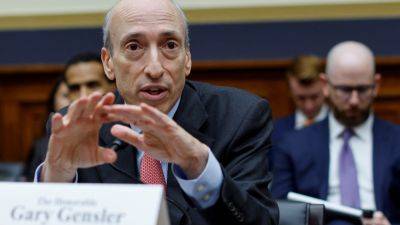Why 401(k) plans are the 'final frontier' for exchange-traded funds
While many investors have flocked to exchange-traded funds, they haven't gained much ground with 401(k) plan participants.
Exchange-traded funds, or ETFs, debuted in the early 1990s and have since captured about $10 trillion.
Mutual funds hold about $20 trillion, but ETFs have chipped away at their dominance: ETFs hold a 32% market share versus mutual fund assets, up from 14% a decade ago, according to Morningstar Direct data.
«ETFs are becoming the novel structure to be used in wealth-management-type accounts,» said David Blanchett, head of retirement research at PGIM, Prudential's investment management arm.
However, that same zeal hasn't been true for investors in workplace retirement plans, a huge pot of largely untapped potential for the ETF industry.
At the end of 2023, 401(k) plans held $7.4 trillion, according to the Investment Company Institute, or ICI, and had more than 70 million participants. Other 401(k)-type plans, such as those for workers in universities and local government, held an additional $3 trillion, ICI data shows.
But hardly any of those assets are in ETFs, experts said.
«There's a lot of money [in workplace plans], and there's going to be more,» said Philip Chao, a certified financial planner who consults with companies about their retirement plans.
«It's the final frontier [for ETFs], in the sense of trying to capture the next big pool of money,» said Chao, the founder of Experiential Wealth, based in Cabin John, Maryland.
More from ETF Strategist:
Warren Buffett's S&P 500 bet paid off
How a tax increase may affect your brokerage account
What to do with RMDs when you don't need the money
About 65% of 401(k) assets were invested in mutual funds at the end of 2023, according to ICI data. The
Read more on cnbc.com






















